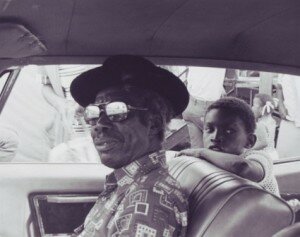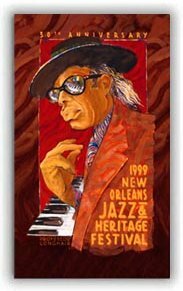 Maureen Byrne, Director, Youth and Family Engagement, generationOn
Maureen Byrne, Director, Youth and Family Engagement, generationOn
I love to be around babies. Coming from a family of nine children, I spent a good amount of time taking caring of babies and became a sought after babysitter in my neighborhood because of my experience. My daughter developed a similar love for babies holding and cuddling her 16 cousins. Later, in middle school, my daughter became a certified Red Cross babysitter. She quickly whipped up a resume, and made flyers announcing her passion, experience and availability but she was too young to take care of babies on her own and had no customers. By high school, all of her cousins had grown up and she routinely lamented the fact that there were no more babies to hold.
When she found out that we could volunteer at a home that helps homeless teen moms with newborns, she jumped at the chance. It was a shared interest and the time worked for both of us — early evening. It was not too far away. As a working mom, I can always use more opportunities to spend “quality time” with my teenage daughter. For two hours each week, we held and fed the teen mom’s babies. Unlike me, my daughter liked changing diapers! At the end of the evening, she reported to the moms how “it” went and they appreciated her comments about their adorable and well-behaved babies.
By volunteering together, my daughter learned more than what it means to care for a newborn. She learned how helping others can be transformative. She developed confidence in herself and her abilities. She encouraged a few of her friends to join her and demonstrated leadership by advising the other teen sitters. I appreciated the interaction she had with the older teen moms from diverse socio-economic backgrounds. I noticed the way my daughter felt needed, that her efforts were valued. Volunteering together and knowing it provided a meaningful service for the moms, who had to go to class or work as a requirement to live at the home brought us closer together. Our discussions about the babies, their moms, their parenting styles and the difficulties of being a teen mom made me feel closer to my daughter.
Our experience made me realize that volunteering with your kids has big benefits. It teaches children the values of kindness, compassion, tolerance and community responsibility. Family members use their talents to work on an issue they feel passionate about and feel valued for their contributions. It strengthens communication and allows family members to be role models. It builds shared memories. It helps your community. ( and it is fun!)
To make the most out of volunteering as a family, check out these tips:
- Find a volunteer activity that fits your family’s interests, schedules and that the kids can help plan.
- Start small. Consider a one-time event such as Family Volunteer Day or a short-term activity, before making a long-term commitment.
- Find out what’s expected. Ask about age requirements, safety considerations, and appropriate dress. Attend orientation or training sessions if offered.
- Show up on time. Be ready to do what is needed.
- Be patient with small children and keep them involved by praising their efforts.
- Afterwards, talk about the experience on your drive home or during a family meal. Talk about what you did, why you did it, how it felt, and what you learned. Celebrate your efforts. It will make all of you feel like doing it again.
- Keep a family-volunteering scrapbook or create a family volunteering calendar. Get input from all family members in planning future activities.
- Encourage other families you know to participate with you.
The experience of spending time with my daughter doing something we both enjoyed, worked well for both of us.
And now, she has more babysitting offers than her teenage social life permits!
Want to try family volunteering?
- Call your department of social services to learn about your community’s needs.
- Check out FamilyCares for family friendly project ideas.
- Go to Kids Care Clubs learn how you can start a service club with your children and their peers.
- Check out Doing Good Together’s family service ideas.
- Find a HandsOn Action Center near you for volunteer activities and other resources for family volunteering .
This post was originally published as a guest post on Blogher.com.

 Jeff Parness, Founder and Chairman, The New York Says Thank You Foundation
Jeff Parness, Founder and Chairman, The New York Says Thank You Foundation By, Meg Moloney, Senior Director, Programs,
By, Meg Moloney, Senior Director, Programs, 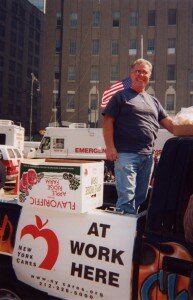 As my colleagues and I crossed the Williamsburg Bridge, we talked to each other and to total strangers, trying to make sense of events. It was a hot day. When we got to the Brooklyn side of the bridge, a small group of New Yorkers handed cups of water from the back of a pick-up truck to people trying to get home. This simple gesture brought relief to many and even tears to some. As I approached the impromptu aid station I remembered how 10 years before there had been serious racial tensions and violence not far from that spot. A lot had changed since 1991 and it was heartening to see residents from every part of the neighborhood working together to distribute water to the diverse and ragtag river of people walking by. Everyone seemed to feel a sense of togetherness about the experience. It made a world of difference to those of us with long walks still ahead and helped us put one foot in front of the other and keep going.
As my colleagues and I crossed the Williamsburg Bridge, we talked to each other and to total strangers, trying to make sense of events. It was a hot day. When we got to the Brooklyn side of the bridge, a small group of New Yorkers handed cups of water from the back of a pick-up truck to people trying to get home. This simple gesture brought relief to many and even tears to some. As I approached the impromptu aid station I remembered how 10 years before there had been serious racial tensions and violence not far from that spot. A lot had changed since 1991 and it was heartening to see residents from every part of the neighborhood working together to distribute water to the diverse and ragtag river of people walking by. Everyone seemed to feel a sense of togetherness about the experience. It made a world of difference to those of us with long walks still ahead and helped us put one foot in front of the other and keep going. Thousands of people came to us to volunteer—saying over and over that they wanted to find a way to do something positive in response to the tragedy. Many thousands of New Yorkers offered to help, as did people from California and Texas, and even Australia and Brazil.
Thousands of people came to us to volunteer—saying over and over that they wanted to find a way to do something positive in response to the tragedy. Many thousands of New Yorkers offered to help, as did people from California and Texas, and even Australia and Brazil.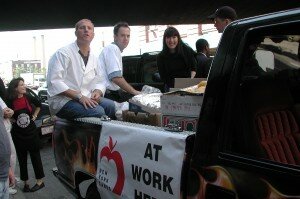 “Point Thank You”—a place just north of Ground Zero where volunteers let weary relief workers coming off their shifts know how grateful we were for their extraordinary efforts. In fact, it seemed everyone involved kept thanking each other—volunteers thanked first responders—first responders thanked volunteers. In the midst of unfathomable sadness, countless acts of generosity gave us strength.
“Point Thank You”—a place just north of Ground Zero where volunteers let weary relief workers coming off their shifts know how grateful we were for their extraordinary efforts. In fact, it seemed everyone involved kept thanking each other—volunteers thanked first responders—first responders thanked volunteers. In the midst of unfathomable sadness, countless acts of generosity gave us strength.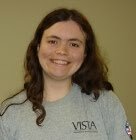

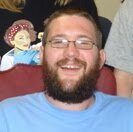
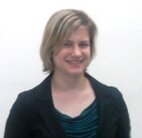
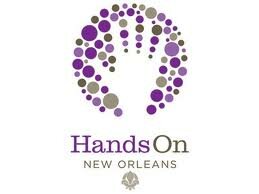
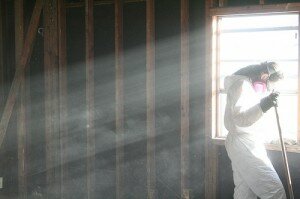
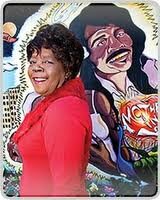
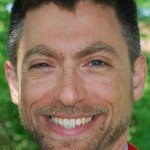 by Chris de Veer, former Volunteer & Director of Hands On Gulf Coast (2006 – 2008)
by Chris de Veer, former Volunteer & Director of Hands On Gulf Coast (2006 – 2008) The first neighborhood I visited was East Biloxi, home to many Vietnamese and African Americans.
The first neighborhood I visited was East Biloxi, home to many Vietnamese and African Americans.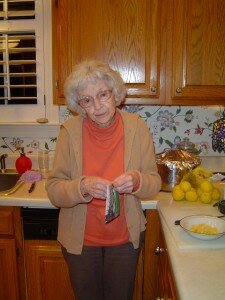 Two years before Katrina, I visited my Grandma, pulled out her photo albums, scanned in every photo, made a database, and asked her to identify everyone in every photo, estimate when the photo was taken, and describe what was going on.
Two years before Katrina, I visited my Grandma, pulled out her photo albums, scanned in every photo, made a database, and asked her to identify everyone in every photo, estimate when the photo was taken, and describe what was going on.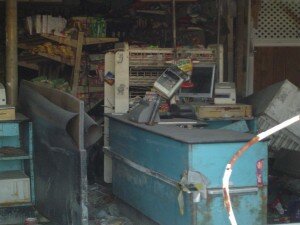 ench of rot was overpowering.
ench of rot was overpowering.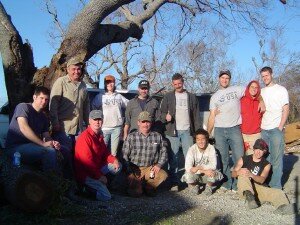 I know my grandmother was lucky compared to many other victims of Katrina.
I know my grandmother was lucky compared to many other victims of Katrina.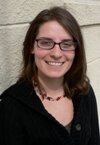
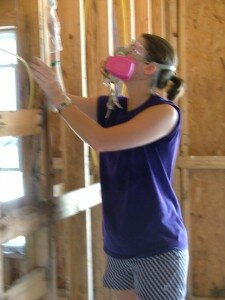 I don’t think either of us truly knew what we were in for…and I think back and cannot believe that there were people from our national office that believed we had the capacity and ability to accomplish what we accomplished.
I don’t think either of us truly knew what we were in for…and I think back and cannot believe that there were people from our national office that believed we had the capacity and ability to accomplish what we accomplished.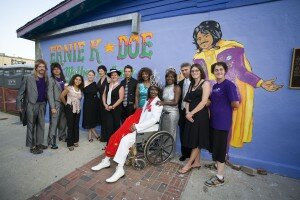 So many people have come from around the world and either come back multiple times or have decided to make New Orleans their home.
So many people have come from around the world and either come back multiple times or have decided to make New Orleans their home.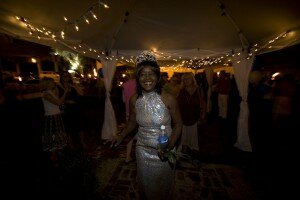

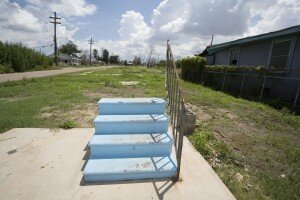 When we were in the Gulf volunteering, the physical destruction caused by the storm was no longer represented by piles of debris or the twisted remains of buildings, but rather by endless stretches of emptiness marked only by driveways and stairs leading to the ghosts of vanished front doors.
When we were in the Gulf volunteering, the physical destruction caused by the storm was no longer represented by piles of debris or the twisted remains of buildings, but rather by endless stretches of emptiness marked only by driveways and stairs leading to the ghosts of vanished front doors.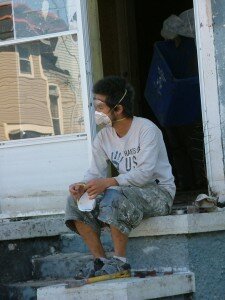 Volunteering with
Volunteering with  “Gutting is fun!” Actually, we all know that it is a heartbreaking job, tempered only by the cathartic relief of exhausting physical labor, and the knowledge that we are actually helping someone clear a space for their future, and dreams for a new beginning.
“Gutting is fun!” Actually, we all know that it is a heartbreaking job, tempered only by the cathartic relief of exhausting physical labor, and the knowledge that we are actually helping someone clear a space for their future, and dreams for a new beginning.